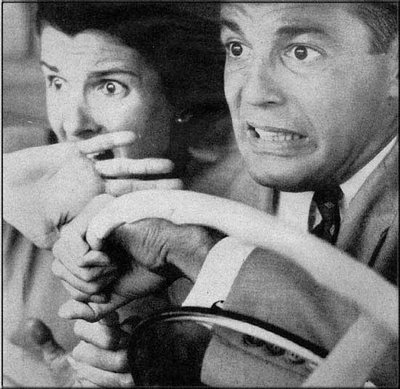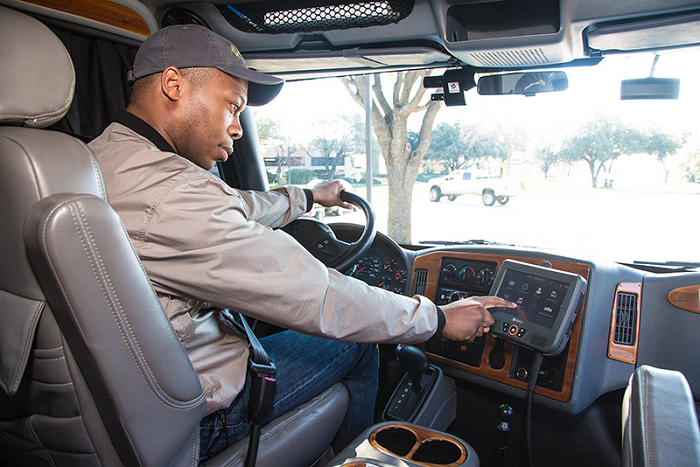Where Your Fear of Driving Comes From and How to Crush It

As a kid you no doubt dreamt of the day you could jump in the driver’s seat of your first car. But if you developed a fear of driving as you grew up, sitting behind the wheel is now a nightmare.
You now panic when you brake. You feel like you’re flying even when driving below the speed limit. You might even mumble to yourself, “almost there, almost there” with every turn. When you reach your destination, you tell yourself that you’re better off taking the bus.
A fear of driving is crippling. It takes effort to overcome, and you can’t just talk yourself out of it they way some people make it seem. Nevertheless, it’s a fear that you can defeat for good with the right approach.
The Roots of Driving Anxiety

A fear of driving, a.k.a driving anxiety and even “vehophobia” among psych circles, is like any other form of anxiety in that it doesn’t have a single cause. Just like a fear of heights comes from factors that seem to build on top of each other (excuse the pun), a fear of driving can come from anywhere and everywhere.
For one person, a close call while learning to drive may have started it. For someone else, it could just come from having a “type-A personality”.
Weak driving skills
Not everyone who has their license has good driving skills, hence why some people ask “where did they get their license?” Weak driving skills can make a basic task difficult, disorienting and dangerous to perform.
For instance, if a driver tries to switch lanes on a busy freeway and hasn’t learned to check their blind spot well enough, they can easily bump into (that’s putting it lightly) or sideswipe a vehicle that they didn’t see before.
It’s worse if someone has told the driver that they’re not good at checking their blindspot. The awareness of this weakness and its consequences could make them nervous every time they have to switch lanes.
Poor driving skills could stem from a lack of practice, poor driving instruction, or even learning disabilities or cognitive deficits.
Mental illness
Mood disorders can lead to a fear of driving, especially if a person suffers from anxiety disorder in any one of its forms (Generalized Anxiety Disorder (GAD), Post-Traumatic Stress Disorder (PTSD), Panic Disorder and so forth).
Each form can affect a driver in different ways, but what is certain, is the fact that anxiety of any type will make a driver overreact to situations where there’s no need for alarm.
For example, a person who’s fear of driving comes from anxiety may feel like they’ll lose control and veer off into a ditch due to slightly stronger-than-normal wind gusts. Driving anxiety of this nature is not only unbearable, but dangerous as the affected driver could make rash decisions that lead to serious car accidents.
Past experiences
The most expected cause of driving anxiety is some event that a driver experienced, an experience the driver can’t forget. The list of plausible events is endless: a major car accident in childhood, witnessing a pedestrian getting struck by a car, hitting a pedestrian and plenty more.
For the very sensitive, watching a movie or a T.V. show that depicts violent scenes involving car crashes and their effects could lead someone to second-guess their safety behind the wheel.
Stressful driving conditions
Finally, there’s a fear of driving that only “acts up” during specific scenarios. Drivers afflicted with this kind of anxiety could have any of the above-mentioned issues, likely in a mild form, where they drive perfectly fine as long as they’re not facing a specific hazard (or what feels like one).
For example, you could have a person who drives just fine normally, but panics when it rains or when it gets dark or when they have to take a freeway. Many drivers fall into this category, and are probably the ones who can manage and overcome their fears the easiest.
Ultimately a fear of driving isn’t random – you have to find out what drives your anxiety if you are to crush it for good. The biggest challenge in your journey to crush driving anxiety, is to understand where it comes from. Once you know, or at least have an idea of what the roots of your anxieties are, you’ll have chance of shutting them out for good.
Identify the Cause & Triggers of Your Anxiety

The next task will seem like a lot of work but it’s important nonetheless: try to visualize all the times you drove, and what specifically made you anxious. It could be a place, a scenario or even a person (you might not want to tell them). If you need help to jumpstart your thoughts, check out this list below taken from this anxiety workbook:
Driving Anxiety Triggers
| Driving Conditions | Always Avoid | Avoid With Exceptions |
|---|---|---|
| Expressways with limited Access | ||
| Roads through areas with no homes or stores where you can stop | ||
| Roads where the speed limit is 50 mph or greater | ||
| Red lights | ||
| Left turn lanes at busy intersections | ||
| Busy roads at rush hour | ||
| Express lanes | ||
| Roads without shoulders | ||
| Roads under construction | ||
| Driving in the middle lane | ||
| Driving in the left lane | ||
| Unfamiliar roads | ||
| Bridges | ||
| Tunnels | ||
| Car washes | ||
| Driving at night | ||
| Emission testing stations | ||
| Others |
You might notice a few scenarios or conditions in this chart that cause you discomfort on the road. If so, “check” them off. For some of you, more than one of these triggers may affect you.
These patterns, once you begin noticing them, will give you some direction as to what you should do and put your mind at ease when driving.
Attack Your Fear of Driving With These Techniques

Now here comes the advice you’ve been looking for: practical tips to put a fear of driving to rest. Just as driving anxiety doesn’t have a single cause, it doesn’t have a single “cure”.
There are many ways to tackle it, and some will work better for others. It’s also very possible that a combination of techniques will be necessary to overcome a fear of driving.
Practice in private
For some of you, a fear of driving acts up when you have company. You’ve probably had a spouse or a child or a friend even, who tells you everything you should or shouldn’t do behind the wheel (if only you had an eject button!).
These folks can lower your confidence, so one thing you can do is to practice driving skills in private. Take this with a grain of salt, however, because some skills will need a professional’s guidance.
But you can practice skills like learning to reverse park, parallel park or make smoother turns on your own, without little risk to yourself or others.
Enrol in a driving school/get “tutoring”
Upon hearing the advice, “enrol in a driving school”, you might say “been there, done that!” But it doesn’t hurt to give it a second run.
Your first round at a driver’s ed course could have very well neglected a particular skill, perhaps, the one you struggle with now. Maybe you didn’t get enough “reps” the first time, so it never developed.
That’s where a refresher course comes in handy. A second go at a driving school will help you tighten up the skill(s) that need some work, and you get to practice them with an expert who (hopefully) won’t intimidate or irritate you.
Get (or continue to get) professional help
Mental conditions, as we mentioned earlier, can sometimes bring on a fear of driving (among others). Seek professional help or continue following a treatment plan if you have one. If you have received a diagnosis, remember that the only way to remove this driving anxiety is by attacking it at the root, which is, the condition itself.
Trust in technology
For those of you just get a bit nervous while driving, the right gadgets may help you keep calm behind the wheel. A wide range of new age vehicles come equipped with safety features, all of which can make driving less intimidating. You know them all: park assist, back-up cameras, lane departure warnings – all of these safety devices can come to your rescue to ease your nerves.
If you’re looking to buy a new vehicle, make sure to keep an eye for these features. You can also look at add-on versions of car safety features if you plan on keeping your current vehicle, which may not have these features (if it’s an older model).
Leave a Fear of Driving in Your Rearview

It takes a bit of time and effort to reduce a fear of driving, but it’s well worth the effort. Why allow yourself to feel tortured just getting from point A to B. It’s time to take back your routine and your life.
Make the time to identify what makes you nervous behind the wheel, and then use the strategies mentioned above to reduce your anxiety. With a bit of practice and patience, you might very well start to feel more at ease when driving.






